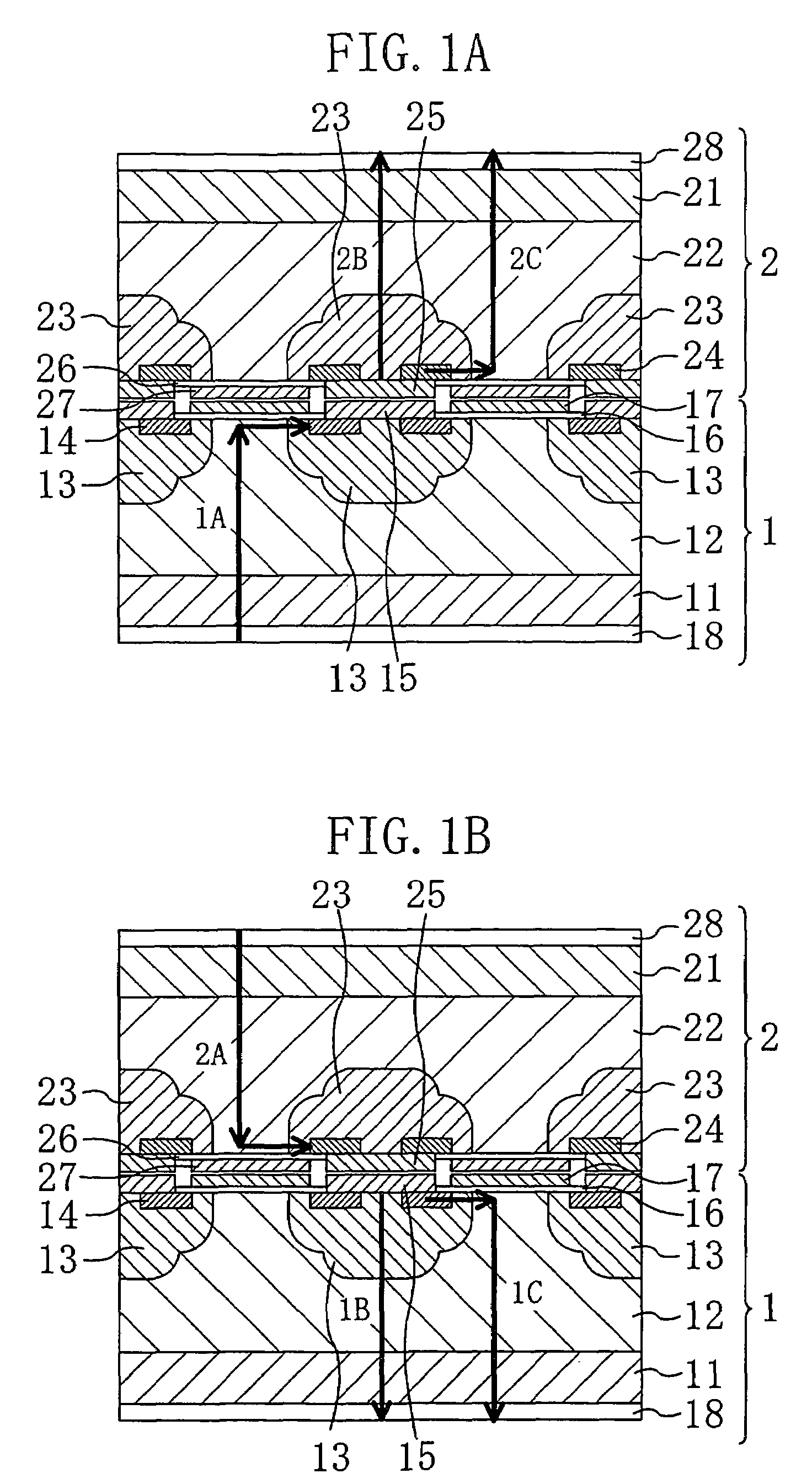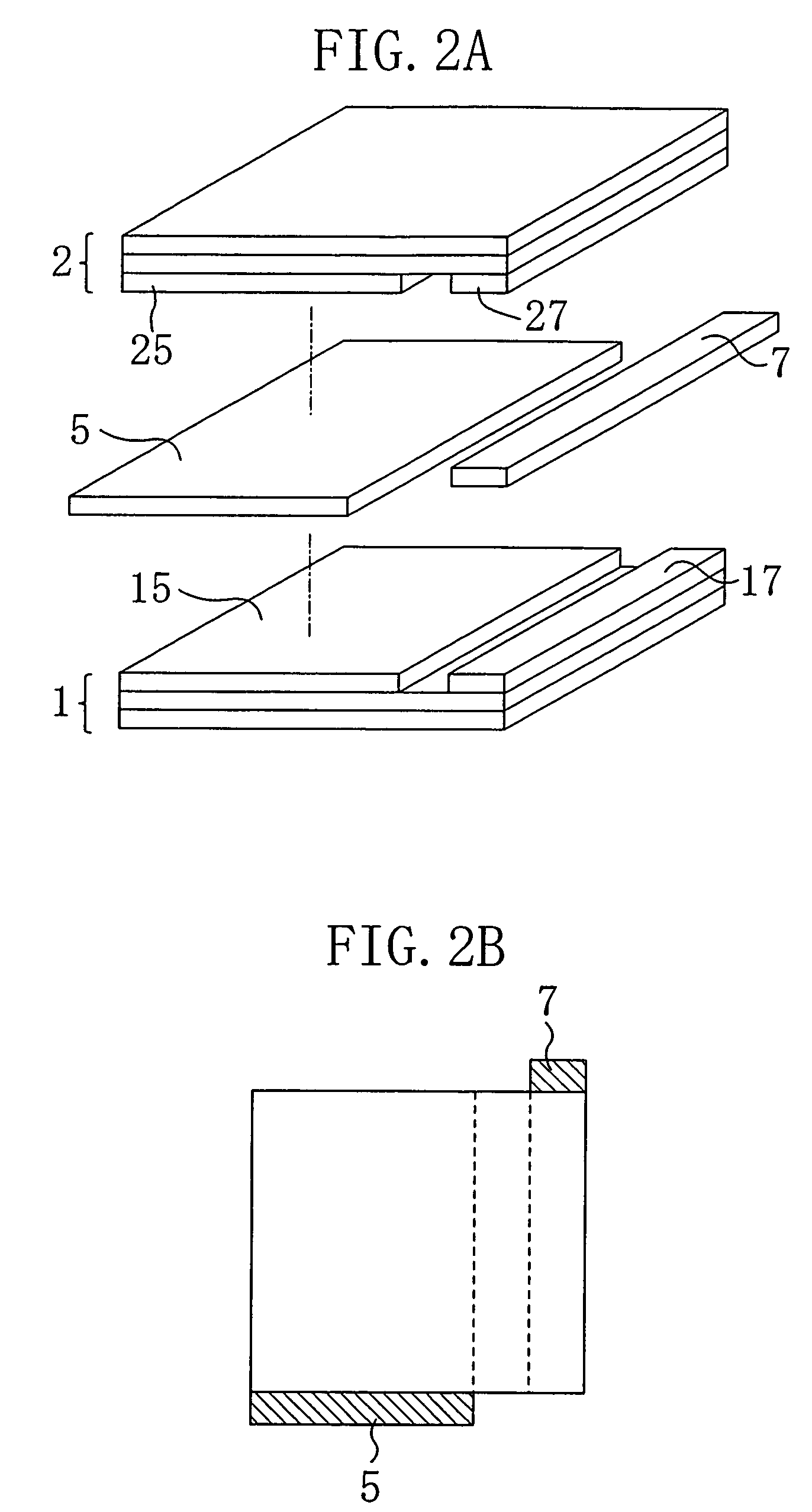Sustaining circuit with bi-directional device
a bi-directional device and support circuit technology, applied in the direction of semiconductor devices, semiconductor/solid-state device details, instruments, etc., can solve the problems of large capacity required, reduced circuit size and loss, and limitation in view of energy consumption resulting from circuit size reduction, etc., to achieve effective suppression of the increase in the temperature of inventive devices, excellent heat dissipation properties, and small loss
- Summary
- Abstract
- Description
- Claims
- Application Information
AI Technical Summary
Benefits of technology
Problems solved by technology
Method used
Image
Examples
first embodiment
[0036]FIGS. 1A and 1B are cross-sectional views illustrating bi-directional device according to a first embodiment of the present invention.
[0037]As shown in FIGS. 1A and 1B, the bi-directional device of the present invention includes a first switching device 1, a second switching device 2 formed on the first switching device 1 so that a principal surface side thereof faces a principal surface side of the second switching device 2. In this example, the first and second switching devices 1 and 2 are vertical-type MOSFETs each having the same electric properties. Note that in this application, a principal surface side of a switching device corresponds to a principal surface side of a substrate.
[0038]As shown in FIGS. 1A and 1B, the first switching device 1 includes a substrate 11 formed of an n-type SiC, an n-type doped layer (drain layer) 12 epitaxially grown over the principal surface of the substrate 11, formed of nitrogen-containing SiC, and having a thickness of 10 μm, a p-type w...
second embodiment
[0067]As a second embodiment of the present invention, a sustaining circuit using the bi-directional device described in the first embodiment will be described. The sustaining circuit is part of a driver circuit for a PDP.
[0068]FIG. 4 is a circuit diagram of a sustaining circuit according to the second embodiment. FIG. 5 is a waveform chart illustrating the waveform of an output current and the waveform of an output voltage of the sustaining circuit of FIG. 4.
[0069]The sustaining circuit of the PDP is a driver circuit for supplying a sustaining pulse voltage to an electrode of the PDP to emit light for display. As shown in FIG. 5, the sustaining circuit of this embodiment includes an output section for outputting a driving voltage of the PDP, first and second switching devices 82 and 83 each of which is an n-channel vertical-type MOSFET, an inductance 84, a capacitor 85, a third switching device 81 which is an n-channel vertical-type MOSFET, a fourth switching device 80, a first gat...
PUM
 Login to View More
Login to View More Abstract
Description
Claims
Application Information
 Login to View More
Login to View More - R&D
- Intellectual Property
- Life Sciences
- Materials
- Tech Scout
- Unparalleled Data Quality
- Higher Quality Content
- 60% Fewer Hallucinations
Browse by: Latest US Patents, China's latest patents, Technical Efficacy Thesaurus, Application Domain, Technology Topic, Popular Technical Reports.
© 2025 PatSnap. All rights reserved.Legal|Privacy policy|Modern Slavery Act Transparency Statement|Sitemap|About US| Contact US: help@patsnap.com



